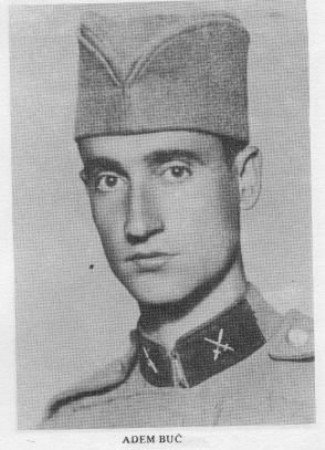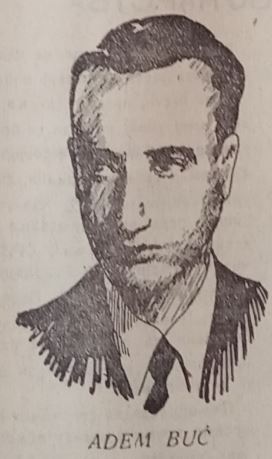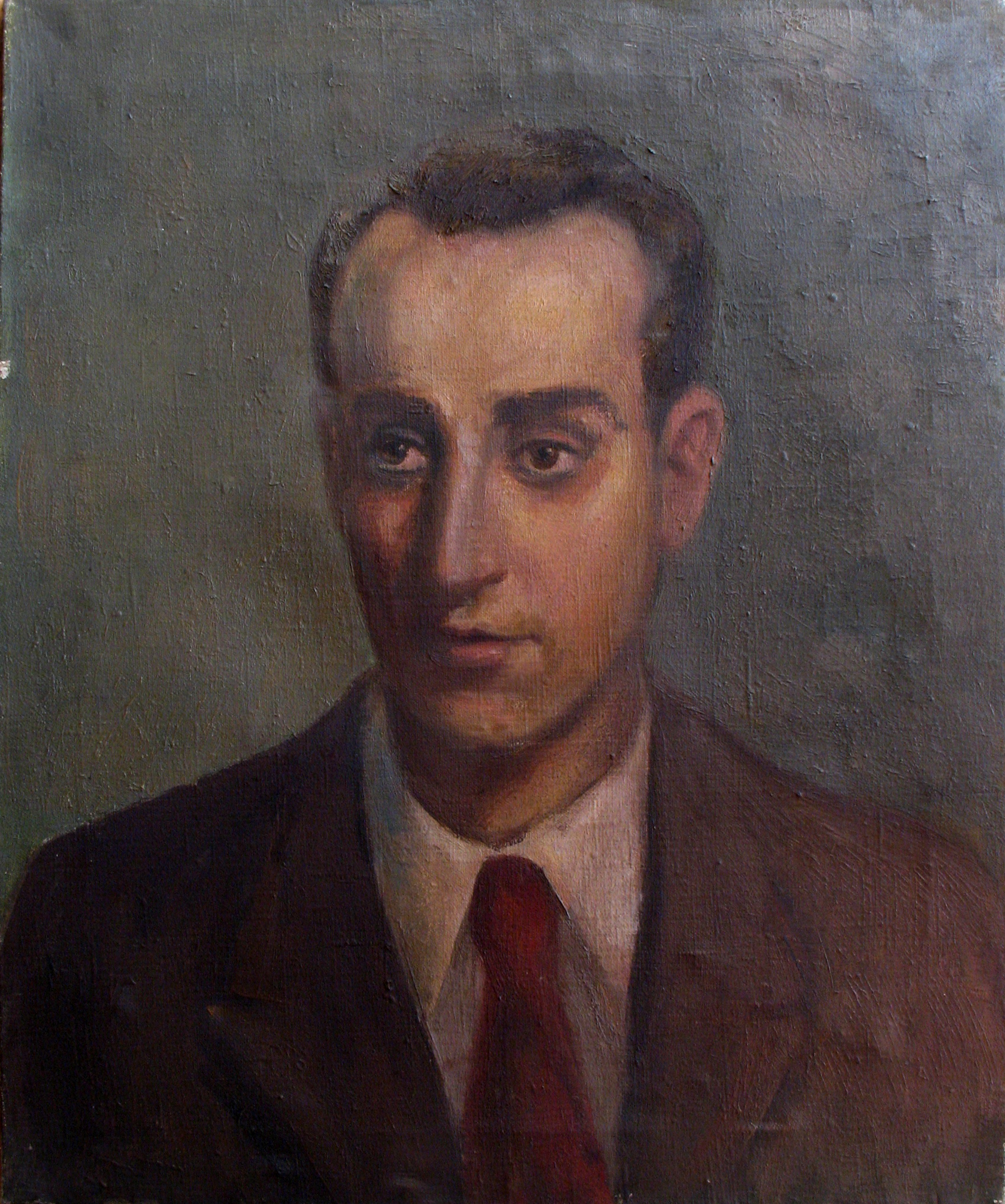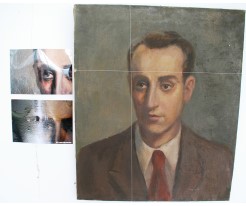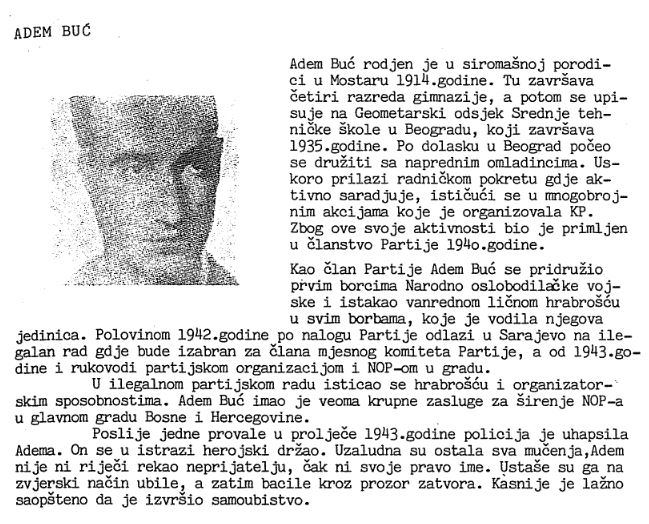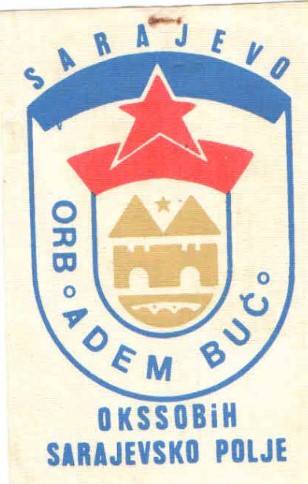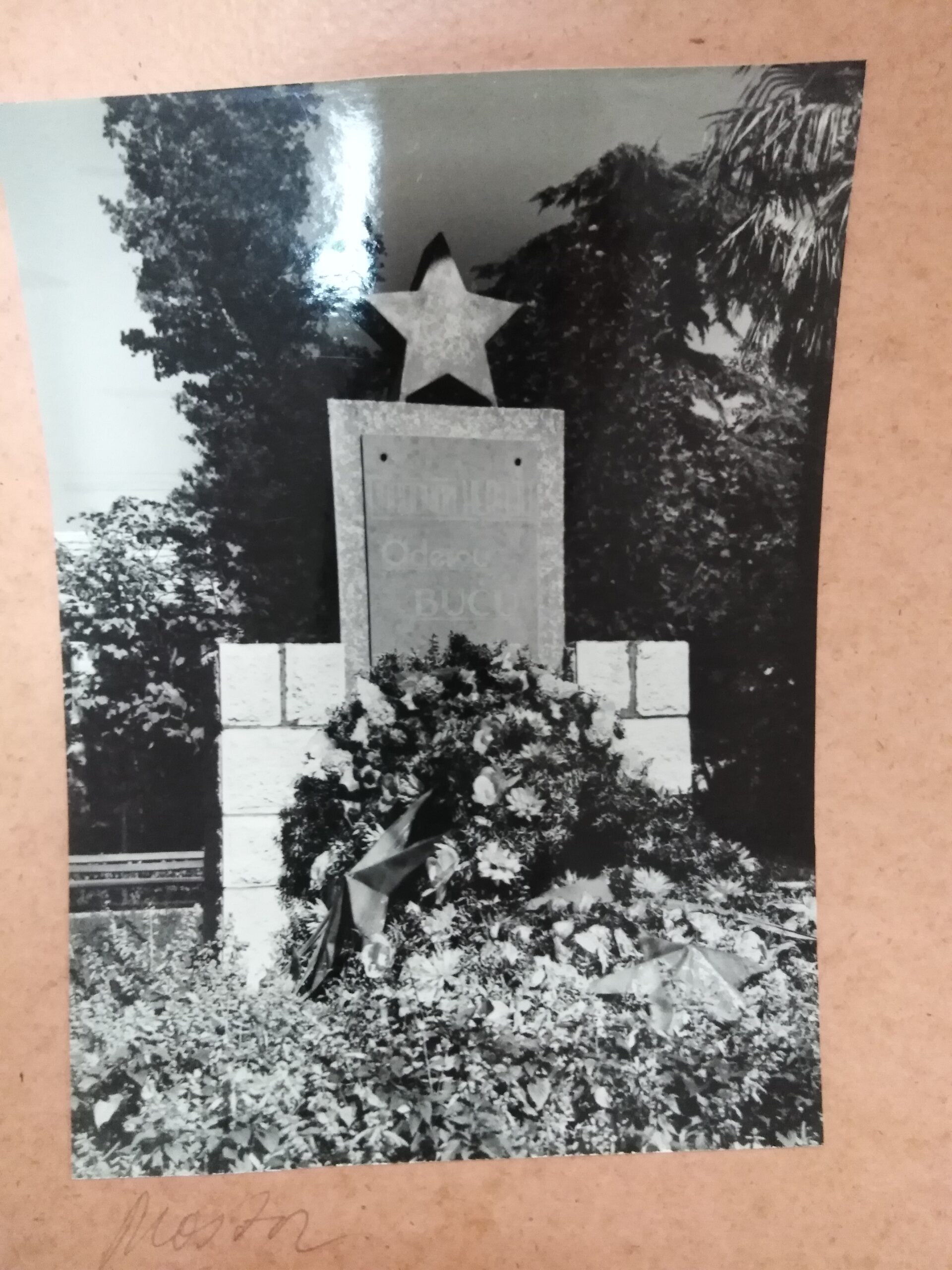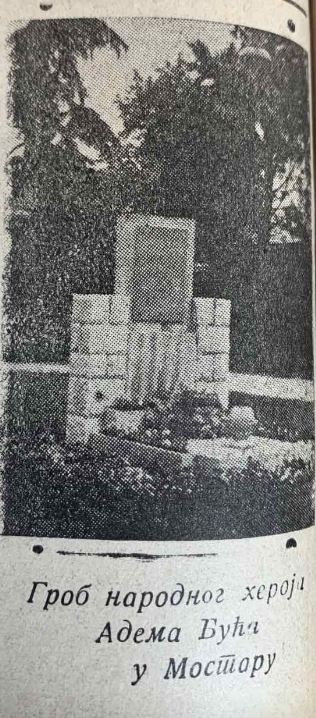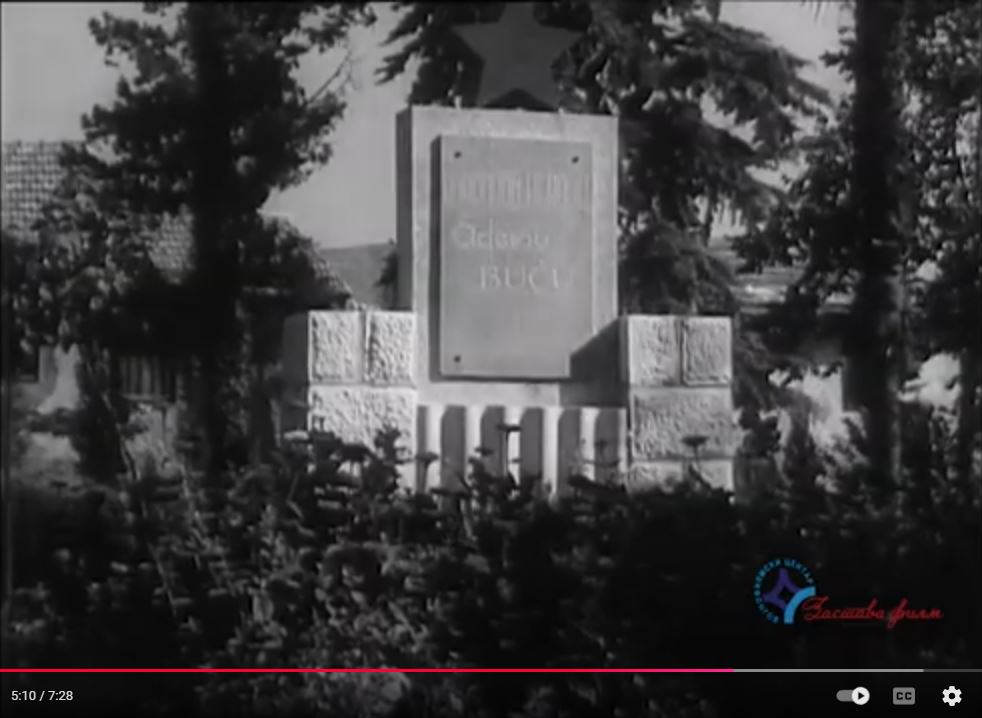
brochure "Partizanski spomenik u Mostaru" (1980)
book “Spomenica Mostara 1941-1945.”
another document or proof of the memorial stone (e.g., a photograph).
Adem I. BUĆ, national hero
ADEM I. BUĆ, born on December 15, 1914, in the village of Bivolje Brdo, near Čapljina. He lived in Mostar since childhood when he moved there with his parents and sister Aziza in 1916. He completed elementary school and four grades of gymnasium in Mostar, and then he transferred to Belgrade where he enrolled in the Technical High School, Department of Geodesy. He worked as a surveyor in Daruvar for a certain period. After completing his military service in 1939, he returned to Mostar and started working in the Geodetic Administration. He joined the revolutionary youth movement as a student in Belgrade. He became a member of the League of Communist Youth of Yugoslavia (SKOJ) in 1939 and the Communist Party of Yugoslavia (KPJ) in August 1940.
Mobilized shortly before the start of the April War in 1941, and after the capitulation of the Yugoslav Royal Army, he returned to Mostar. He actively participated in the illegal preparations for the armed uprising and worked as an illegal activist in occupied Mostar until April 1942. As the secretary of the party cell “Carina,” he organized the collection of weapons, ammunition, and other materials. In this work, he relied on the SKOJ activist “Carina,” assisted by Teofik (Tefa) Kalajdžić.
In April 1942, he joined the Battalion after “escaping from the agents during the arrest while being taken to the police.” He was assigned to political work in the field of the 3rd Company in Blace and later in the Mostar Partisan Battalion, where he served as a political worker. He distinguished himself in the early actions of the Detachment during the fight against the Chetniks and in the breakthrough towards Bjelašnica. After the Chetnik coup, he joined the Igmanska Company of the Romanijski NOPO Detachment. He was wounded in an attack in Hadžići and taken to occupied Sarajevo as a wounded person. Having false documents, he received medical treatment at a hospital in Sarajevo, and after recovering, he connected with the party organization. Following the major police crackdown on the Sarajevo party organization in March 1942, the Local Committee of the Communist Party of Yugoslavia (KPJ) for Sarajevo was disrupted. During the reestablishment of this committee in mid-1942, Adem, together with Džemal Bijedić, Mladen Knežević, and Reuf Galošević, became a member. At the end of 1942, he was supposed to go to Mostar to assume the position of the secretary of the Local Committee of the KPJ, but in early December, while on the street in Sarajevo, he was recognized by two Ustasha agents and arrested, despite being dressed in a Domobran officer’s uniform because they had his picture. This happened as part of a new major police crackdown on the party organization. He was subjected to horrific torture in the Ustasha prison called “Ćemaluša,” but even then, he did not utter a word to the interrogators. He was killed on December 9, 1942, by being thrown out of the window from the fourth floor of the police building (according to some versions, he was first killed and then thrown out of the window to stage a suicide).
After the liberation, his remains were buried in Mostar and moved to the Partisan Cemetery, , according to the relatives of Adem Buć and a memo from the archives of Radmilo Braca Andrić (a note on Wikipedia accessed on Oct 26 2023 indicates he was buried at the “Heroes’ Grave at the Vraca Memorial Park on Mount Trebević near Sarajevo”, which is incorrect). By the decree of the Presidium of the People’s Assembly of the Federal People’s Republic of Yugoslavia on July 26, 1949, he was proclaimed a national hero. A street in Mostar is named after Adem Buć.
Ćemalović, Enver (1986): Mostarski bataljon, Mostar; https://www.klix.ba/vijesti/bih/zasto-nekima-smeta-partizansko-groblje-u-mostaru-i-sta-to-znaci-za-drzavnost-bih/201124140 ; grupa autora (1961): Hercegovina u NOB 1. dio, Beograd, Vojno delo; Drago Karlo Miletić, članak „Italijanska reokupacija Motara (septembar 1941 – juni 1943), Hercegovina br 7, str 119; grupa autora (1986): Hercegovina u NOB 2. dio, Beograd; grupa autora (1986): Hercegovina u NOB 4. dio, Beograd; Seferović, Mensur (1957): „Tajna partijske ćelije“, Sarajevo; Seferović, Mensur (1961): Prozivka na Tjentištu, “Veselin Masleša”, Sarajevo; https://sr.wikipedia.org/sr-el/%D0%90%D0%B4%D0%B5%D0%BC_%D0%91%D1%83%D1%9B ; http://www.slvesnik.com.mk/Issues/6ACBA6C479F56F42AFAE1702DDF63C68.pdf ; grupa autora: Spomenica Mostara 1941-1945; http://www.suggsbih.ba/GEODETSKI%20GLASNIK/GLASNIK%2019/glasnik-19%202.pdf ; https://hrcak.srce.hr/file/427495
Photos: S. Demirović (2018); VFC Zastava film, Na mrtvoj straži, 5:10 https://www.youtube.com/watch?v=6SUFtE9zYfk; Šotrić: Partizansko spomen groblje nakon 10 godina ponovo u budžetu grada Mostara | Tacno.net; https://www.tacno.net/wp-content/uploads/2016/02/157.jpg; https://www.facebook.com/photo/?fbid=722317183276775&set=pcb.722317429943417; https://sr.wikipedia.org/sr-el/%D0%90%D0%B4%D0%B5%D0%BC_%D0%91%D1%83%D1%9B; https://sarajlijacult.wordpress.com/2013/09/16/restoring-national-heroes/; https://www.njuskalo.hr/militarija/ora-radna-akcija-orb-adem-buc-sarajevo-prisivak-oglas-33954701 ; https://4.bp.blogspot.com/-VVY-v5wRy9E/VsIXZy5n8fI/AAAAAAAAQCs/I62i2H2YHpo/s1600/partiza55%2Btacnonet.jpg; Narodni heroji Jugoslavije A-M, Institut za savremenu istoriju, Partizanska knjiga, Ljubljana, Narodna knjiga, Beograd, Pobjeda, Titograd, 1982.
Do you have more information about this fighter? Share your stories and photographs. Let's keep the memory alive!



